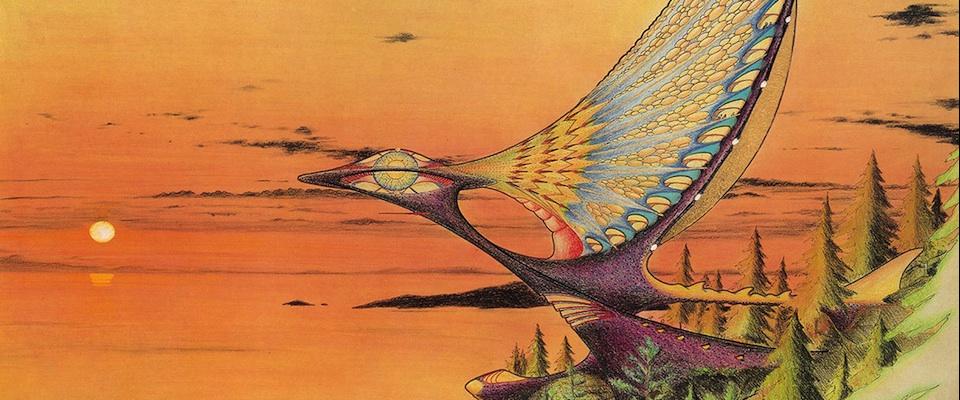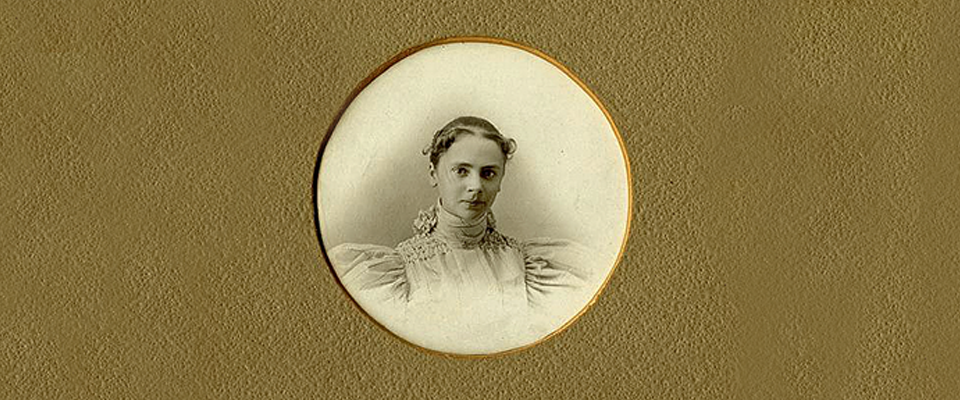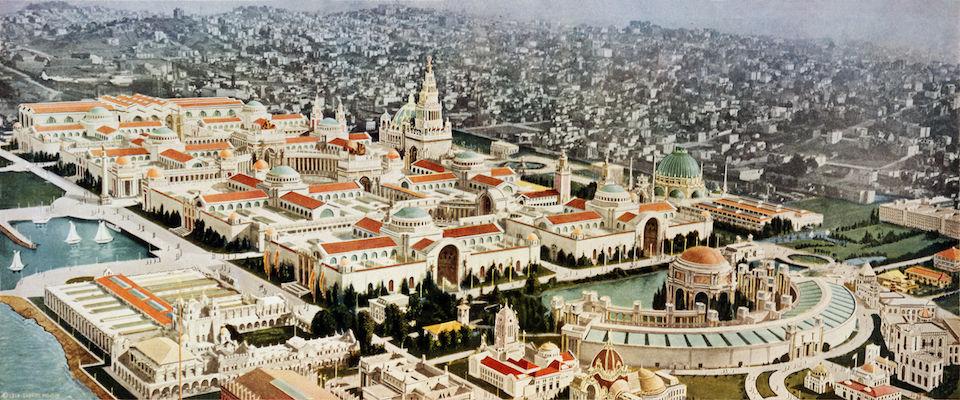On a quiet, ordinary residential block in West Berkeley, amid boxy bungalows with manicured yards, there is a house that defies description. It’s known as the Fish House, but it looks more like a many-nostrilled beetle, or a sea slug with an underbite, or perhaps something Gaudí would have designed had he been a set designer on Star Trek.
The Fish House is an anomaly, but not just because of its appearance; it also represents a rare victory for the man who designed it, architect Eugene Tssui. Tssui (pronounced Sway) bases his designs on the principals of nature. Many of them look as if they sprouted from the ground or crash-landed from outer space—and most have never been built (he built the Fish House for his parents in the early ’90s).
Though Tssui’s unconventional building designs have attracted interest, more often they have brought rejection and ridicule.
“For years I’ve had to fight against the mainstream and conforming elements of society,” he says. “Thank god I’m a fighter.”
Tssui has attracted a great deal of media attention over the years, as much for his personal oddities as his architectural work. He makes his own clothes, which he calls “moving architecture,” often wears a cape or suits covered in shimmering, purple photovoltaic scales, eats every other day (to conserve resources), and possesses a near maniacal drive for competitive sports.
And then, there’s his name. Until a few years ago, he spelled it Tsui. But during a trip to China in 2010, he says he was visited in a dream by Genghis Khan. The 13th century founder of the Mongol Empire advised Tsui to add an additional S to his name because the double S carries magic powers. Despite the obvious complications it would cause, Tsui became Tssui, believing it would bring him luck.
Whether Tssui’s design philosophy is ahead of its time or simply out of step with reality is a question that has yet to be answered.
For example, there is Nexus, his Berkeley master’s thesis, a massive floating city that would drift around the open ocean, free from the woes of mainland society. He also created a plan for a 9-mile-long floating bridge between Spain and Africa across the Strait of Gibraltar, complete with a mid-span convention center, 150 power-generating windmills, and 80 tidal turbines. Tssui claims the bridge could power the entire nation of Morocco along with the Spanish province of Cadiz. And then there is the Ultima Tower, a 2-mile-high skyscraper that would house 1 million people and generate electricity using atmospheric pressure differences between its 500 floors. It would be the tallest building in the world—by nearly four times.
Tssui’s personal quirks and far-fetched schemes can make it easy to dismiss him as an eccentric. But behind the peculiar façade is a man of exceptional intelligence, coherent principals, and a dedication to sharing his convictions.
Tssui believes that humanity is in peril. It’s a common enough sentiment these days, but what is unusual is where Tssui places the blame. He believes that mainstream architecture is destroying our planet, our communities, and our health. The answer, he says, is a radical rethinking of the places we inhabit, based on the biological principals of the natural world.
“I’m trying to change people’s relationships with nature, with each other, and with the buildings they occupy,” he says. “We must understand how nature works and align our lives with that.”
Tssui’s designs minimize electricity use, feature open floor plans to facilitate human interaction, and promote physical activity with features like bicycle-powered washing machines.
Change, Tssui says, requires sacrifice.
“Our buildings, our whole sense of architecture, reinforces our maniacal drive for comfort, convenience, and ease,” he says. “Until we realize that our lives cannot be based on those issues, we will continue to move toward a self-destructive future.”
That means many modern conveniences, even electricity itself, are to be avoided whenever possible.

His views may seem extreme, but on the other hand there is growing consensus that the damage humans have done to the planet is nearing the irreversible point. Tssui has been promoting green architecture since well before it became a movement, but now that it has, Tssui hopes his work will finally gain traction.
“It’s taken decades to become acknowledged,” he says, “but because of the so-called green movement, because of the realization that we are destroying the home we live in, my work has taken on a renewed value.”
Doors to the world of conventional architecture closed early and often for Tssui. He was expelled from master’s programs at both Columbia and the University of Oregon, he says; the former because, as the dean of the architecture department told him, “We can’t teach you what you want to learn,” and the latter due to “conceptual differences.” But before expelling Tssui, the dean at Columbia did him a kindness that would change his life, putting him in touch with respected architect Bruce Goff, known for his organic, flamboyant designs. In short time, Goff became Tssui’s mentor, friend, and advocate.
Under Goff’s guidance, Tssui honed his talent and clarified his design philosophy. He decided he wanted to pursue his studies at UC Berkeley, the home of the Free Speech Movement, a place where his unusual approach might be tolerated.
And for the most part it was. It wasn’t until he was nearly finished with his doctorate that Tssui ran into trouble again. Just days after his final exhibition went on display at UC Berkeley’s College of Environmental Design (CED), Richard Bender, then dean of the architecture department, ordered it taken down. Bender felt Tssui’s nature-based designs were “just too radical and far out,” recalls Joe Gouig, exhibition manager at CED.
Gouig was sympathetic: “I thought, hey, this is Berkeley. We ought to provide a venue for this kind of imaginative work.”
Finding a venue for his work remains a struggle. In the decades since his graduation from Berkeley, precious few of Tssui’s designs have been realized. Aside from the Fish House, there is the Watsu School at Harbin Hot Springs, a showcase building in Shenzhen, China called the Ecological House of the Future, and an Emeryville warehouse where for many years his company Tsui Design and Research Inc. was based. There have been numerous smaller projects, but most of his designs languish as models, blueprints, and sketches. Some have been stymied by planning boards and others by resistance from neighbors. Usually it comes down to the strange appearance of his designs.
An upcoming documentary, Telos: the Fantastic World of Eugene Tssui, by filmmaker Kyung Lee, traces Tssui’s career, highlighting the upcoming projects that he hopes may bring him long-awaited recognition.
The film chronicles Tssui’s five-year effort to get an education and visitation center built alongside Mt. Shasta. Like many of his projects, finding words to describe the design is tricky: think giant eyeball meets The Jetsons meets a sea anemone. We see Tssui in meetings with the town mayor, who is kind but cautious; once again Tssui faces an uphill battle.
“Are we ready for this yet?” the mayor asks. “In this community?” Then he smiles. “You don’t strike me as somebody that’s gonna get discouraged by a few people that say, ‘Eugene, are you serious?’”
“No, I get that a lot,” Tssui replies.
He is still awaiting approval.
Telos: the Fantastic World of Eugene Tssui will have its first East Bay screening on Tuesday, October 7, at 7 p.m. at The New Parkway Theatre in Oakland. Following the film there will be a Q & A with director Kyung Lee, with a possible appearance by Eugene Tssui.





















